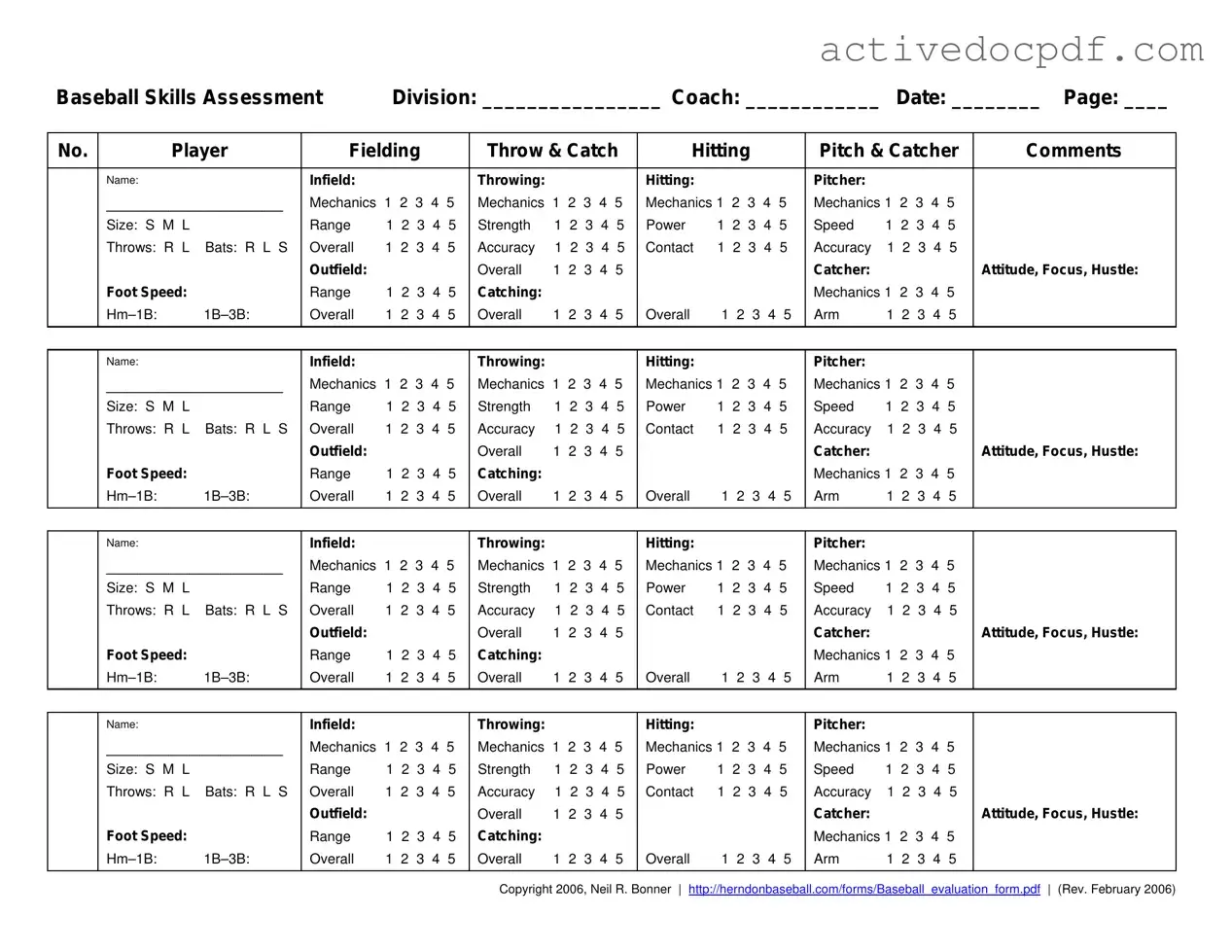The Baseball Assessment form is designed to evaluate players' skills during tryouts. It helps coaches score players on various aspects, including fielding, throwing, hitting, and pitching. This standardized evaluation ensures a fair selection process for teams, especially for All-Star travel teams.
How does the scoring system work?
The form uses a five-point scale for scoring. Coaches award:
-
5 points for exceptional skills
-
1 point for extremely poor skills
-
2 to 4 points for levels in between
This scoring system helps coaches assess players' abilities relative to their peers, making it easier to select the best candidates for the team.
The assessment covers a range of skills, including:
-
Fielding (infield and outfield)
-
Throwing and catching
-
Hitting (mechanics, power, contact)
-
Pitching and catching
-
Base running speed
-
Overall attitude, focus, and hustle
Each of these areas is crucial for a player's overall performance in baseball.
How long do tryouts typically last?
Tryouts usually take between 2 to 2.5 hours. This time includes warm-ups, skill assessments, and breaks. The structured format allows coaches to evaluate players thoroughly without feeling rushed.
Yes, while the form is primarily designed for All-Star travel teams, it can also be used for evaluating players in house leagues. Coaches can adapt the scoring and evaluation criteria based on their league's specific needs.
What should players expect during the tryout process?
Players can expect a variety of activities during tryouts, including warm-ups, base running, infield and outfield drills, hitting practice, and assessments for pitching and catching. Coaches will provide instructions and feedback throughout the process, ensuring that all players have a fair opportunity to showcase their skills.
